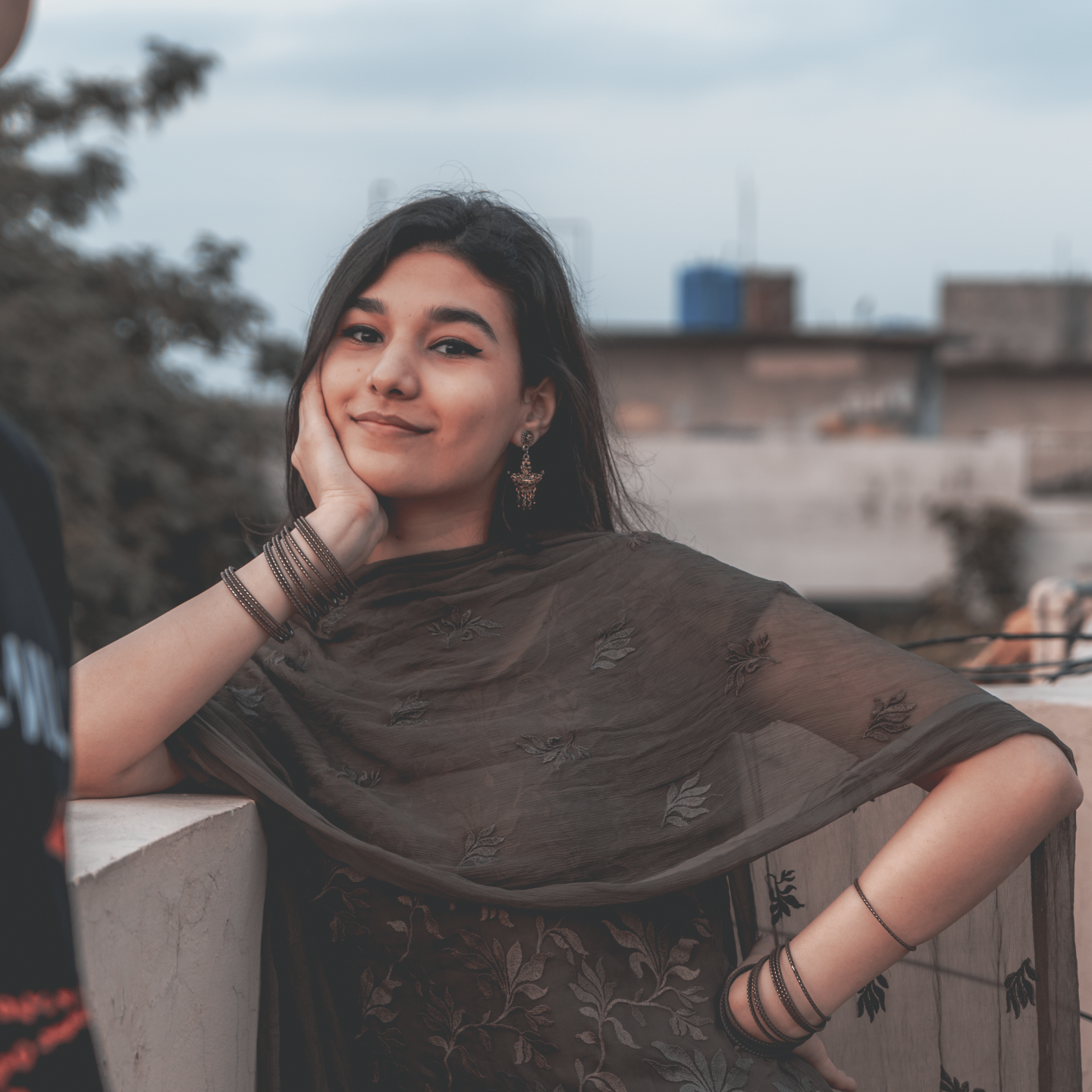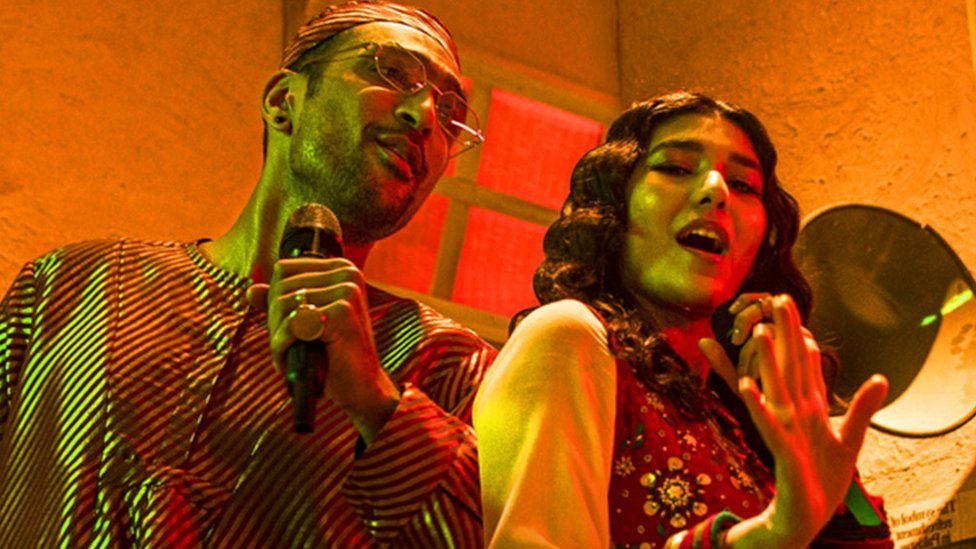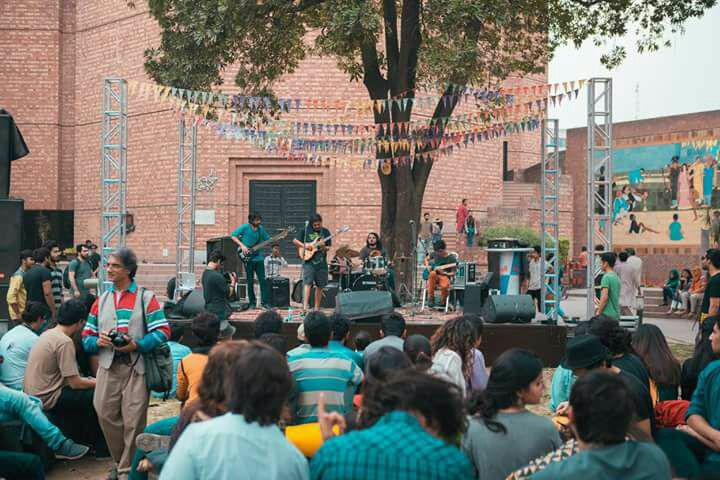Understanding Pakistani pop today through its writers
Natasha Noorani, Abdullah Siddiqui, and Sherry Khattak identify new directions in contemporary local pop music
KARACHI:Music has always been tethered to the personal. But life in a post-lockdown world has revitalized that relationship for today’s Pakistani pop industry. I still remember how it felt to watch Hasan Raheem’s pastel-filled Aisay Kaisay music video, filmed just down the street from me, and then to meet the fabulous Zeb Bangash for the first time online live.
Strangely, the void Covid left in human contact gave all kinds of art a visceral proximity. There was a vulnerability we craved. A refreshing rawness and relatability that Pakistani pop began to deliver – in a number of ways.
This was something I discussed at length with the brilliant, ever-composed Natasha Noorani. Many will recognize her as a dynamic mainstream performer, but not many know she holds a Master’s in ethnomusicology, or that she runs a Pakistani pop archive page on Instagram.
She traced major transformations in the pop industry back to the start of lockdown in 2020, when artists could no longer depend upon live shows for income, “What it did was, it kind of set an equalizer off. Everyone was sitting at home making music, whether they were collaborating virtually, not doing that… all of those doors were open. I did so many virtual collaborations and performances during Covid right from my bedroom. Having that time and space and ability to negate all of the fluff and the glam and the shiny sparkles that come with having to make it in the industry… it was just so nice for that focus to be on the music itself.”
This recentering of the music scene allowed pop to soar past any tightly drawn boundaries that big names in the industry could control. What we knew of pop was destabilized, and then rebuilt by the independent music scene in fascinating new ways. But this is not the first time indie music has played a pivotal role in rediscovering local pop sound. Both have influenced each other since the 90s, originally with bands like Milestones, Fringe Benefits, and many others, being discovered on the show, Music Channel Charts.

It is the independent scene that engineers a space for transcending boundaries of what pop music “should” look like. Having grown up listening to small-time local indie bands, Natasha puts it best, “It’s a very beautiful thing because it is a snapshot of the youth that is embodying it, making it, presenting it, and distributing it to the very same people. I will give it to the independent scene. I think they’re the ones that have kept music alive.”
When we think of indie music – at least those of us who spend most of our time scouring the ends of the earth for it – we tend to picture breathy vocals, acoustic instruments, and stripped down mixes. But a surge in “bedroom producers”, as Natasha puts it, makes for an almost contradictory existence of both rising independent sound and increasingly electronic pop music in Pakistan today.
Longtime producer (and all-round incredible artist) Sherry Khattak argues that songs are their best with a balance of both, “I mean, if you make a completely electronic song with nothing recorded in it or nothing acoustic, it can pretty easily sound very stock. But when it comes to recording a live instrument, the fun thing about that is even if you have the same setup, same microphone, same room, same place where you’re recording, every time will be different. That’s the beauty of audio production.”

This sound-blending practice came as a pleasant surprise, uniting extremist musicheads who either winced at the sight of an interface or saw only “EDM” as the future of pop. But advancements in music production did far more than bridge gaps. Genres in pop today are a growing multiverse, with seemingly opposing sounds, languages, and ideas morphing into each other to create groundbreaking new music.
Abdullah Siddiqui’s entire discography is a masterclass in the diverse, genre-breaking potential of Pakistani “electropop” today – a genre that is often misunderstood to be attached only to club music or heavy digital sound, but that Abdullah insists is so much more limitless. With the advent of synthesizers, he discusses how it is now possible to craft sound at the absolute baseline level, “What I philosophically have always resonated with, about electronic music, is that it doesn’t have any inherent cultural context. You know, nobody owns sound. And because electronic music has allowed for artists to be exacting at that level, I think it just has so much more potential… and gives you so much freedom.”
The word “artist” for today’s pop scene holds a multitude of meanings. Gone are the days when the only talent recognizable was singing. Artists today are musicians, composers, producers, curators – and even fans! Take Shae Gill for example, whose wonderful, distinctly grainy voice was found first through her cover page on Instagram.
With a recent outpour of artwork, covers, and a deeper investment in artists’ personal journeys, fans are more responsive than ever, creating room for intimate connections between artists and listeners.
And with versatile artists like Natasha, who has known the industry as a curator, collaborator, solo artist, and music historian, there are many enthralling stories for fans (like me) to unpack. “I make it a point to kind of reach out to something and relay a message that they might be able to understand, so it is definitely about communication for me, on multiple levels,” she says.
Pop is also witnessing a brand new era in terms of its content and themes. While most old pop songs you know have something or the other to do with romantic love and heartbreak, pop songs today are experiencing an invigorating departure from this now monotonous theme.
Natasha reveals that much of this is due to pop music from the 1940s to 80s primarily being released as film songs, tied to the narratives of the films they were a part of. With the music industry beginning to hold its own, there was increasing room for expanding lyrical subject matter, which now covers everything from toxic relationships to spicy condiments.
1631956292-0/Image-from-iOS-(22)1631956292-0.jpg)
There were also more opportunities to experiment with a number of local languages in song. Set first by Ahmed Rushdie’s pop classic, Ko Ko Korina, contemporary pop maintains a trend of using relatable, colloquial lyrics, but has also adopted the seamless multilingual back-and-forth that forms our regular speech today. Abdullah Siddiqui cites Hasan Raheem, Maanu, Shamoon Ismail and Faris Shafi as pioneers of a new “superpowered language”, emerging from a kind of rhythmic, colloquial code-switching that both reflected real-life contemporary Pakistani dialogues and made for brilliant hit songs.
In recent years, the promotion of local languages also became a tactic of beloved and familiar commercial music platforms like Coke Studio – the latest season of which witnessed a drastic but impressive transformation.
Having worked with such platforms for much of his career, Sherry Khattak unpacks the magnitude of Coke Studio, “With all the negativity that’s going around, this is the only platform that’s spreading positivity and keeping us in the good books, in terms of the global audience. And it’s not just a music platform, it’s an art platform.”

There is no denying that the recent Coke Studio season was a cinematic experience. With releases like “Pasoori” alone becoming worldwide show-stopping “moments”, the reach of Coke Studio is undeniable and vital for the survival of today’s already unstable music industry. But there is, of course, more to the story.
Such platforms, even when representing a myriad of local voices and cultures, are ultimately made to serve commercial purposes. Artists today are in favor of a perpetual plurality in platforms – both commercial and independent – to resist prevailing monopolies held by the bigger names, and to foster an environment that welcomes all kinds of music.

As creatively vibrant as the local pop scene is today, its music economy remains unsteady, and also imbalanced. Artists from low income backgrounds still lack the resources even for bedroom equipment, as well as the exposure that class privilege brings. Women artists have to jump through hoops and risk their safety to gain access to the same contacts and spaces that are just as easily handed to men.
Natasha admits, “After a good 15 years of making that choice as a young girl, to pursue music, only now am I managing to get access to those spaces. And the way that I’ve gotten access to those spaces and the respect of my peers is by putting music out, and by showcasing my vision.”
1679383324-0/1-(3)1679383324-0.png)
It is truly through each independent vision, imagination, and reimagination, that the world of Pakistani pop survives. Through a coexistence that celebrates both tender electronic ballads and low-budget indie bops. Through a blend in languages that feels thickly familiar on our tongues.
Through an exciting uncertainty that will always be its greatest power. And, of course, through people like you and me: the fans. Chaotic, true blue listeners who have been there, and will forever be ready for the eras that follow.
Have something to add to the story? Share it in the comments below.


COMMENTS
Comments are moderated and generally will be posted if they are on-topic and not abusive.
For more information, please see our Comments FAQ